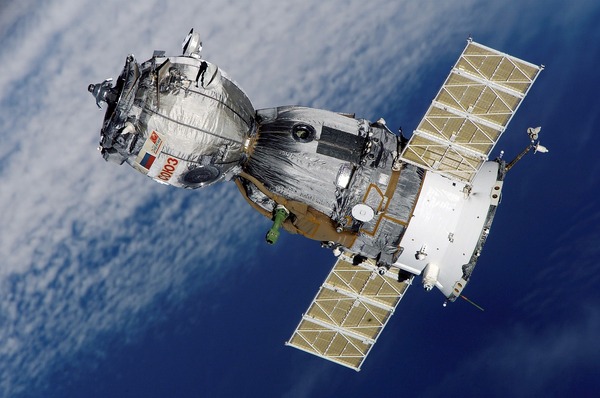This article explores Von Neumann probes and interstellar travel: Could these machines help us reach the stars? Find out more about Von Neumann Probes And Interstellar Travel.
Von Neumann probes, also known as self-replicating machines, have captured the imagination of scientists, engineers, and science fiction enthusiasts alike. These hypothetical robotic explorers offer a tantalizing prospect for interstellar travel, potentially enabling us to reach distant star systems that are otherwise beyond our reach.
Self Replicating Von Neumann Probes
The concept of von Neumann probes is rooted in the idea of creating autonomous spacecraft capable of replicating themselves, leading to an exponential proliferation of exploratory machines as they traverse the vastness of space.

While the realization of von Neumann probes remains speculative and faces numerous technological challenges, their potential for unlocking the mysteries of the cosmos and paving the way for human expansion into the stars has sparked intense fascination and exploration.
In this article, we delve into the possibilities, advantages, and challenges of von Neumann probes in the context of interstellar travel, and explore the question: Could these machines help us reach the stars?
How Will Von Neumann Probes Assist Space Travel?
Von Neumann probes hold immense potential in revolutionizing space travel and exploration. These self-replicating machines offer several ways in which they can assist us in our quest to explore the cosmos.
While the development and deployment of von Neumann probes present significant engineering, technological, and ethical challenges, their potential contributions to space travel are profound.
By leveraging their self-replicating capabilities, resource utilization, adaptability, and autonomous systems, von Neumann probes offer a promising pathway for expanding our reach into the cosmos and unlocking the mysteries of the universe.
Here are some ways in which von Neumann probes could be instrumental in advancing space travel:
Extensive Exploration:
Von Neumann probes have the ability to replicate themselves, leading to an exponential increase in the number of probes available for exploration.
They can be dispatched to various star systems, allowing us to explore a multitude of celestial bodies, such as planets, moons, asteroids, and comets. This extensive exploration would provide us with invaluable insights into the composition, habitability, and potential resources of distant worlds.
Resource Acquisition:
Von Neumann probes can harness the resources available in space to sustain their replication and support further missions.
They could mine asteroids, extract minerals from planetary surfaces, harvest energy from celestial bodies, or utilize other innovative methods to gather the necessary materials for construction and energy generation.
This self-sufficiency reduces our reliance on Earth-based resources and enables sustained exploration over long durations.
Long-Distance Travel:
The self-replicating nature of von Neumann probes opens up the possibility of long-distance interstellar travel.
Instead of relying solely on human-controlled missions, these probes could propagate themselves across vast cosmic distances, bridging the gap between star systems.
By replicating and launching copies of themselves towards new destinations, they could serve as precursors or advanced scouts for future crewed missions, paving the way for human exploration of distant star systems.
Adaptive and Autonomous Systems:
Von Neumann probes would be equipped with advanced artificial intelligence and autonomous decision-making capabilities.
This allows them to adapt to changing environmental conditions, make strategic decisions, and respond to unforeseen challenges. Their ability to self-repair, self-modify, and optimize their functions enhances their resilience and survivability during long-duration missions.
Knowledge Transfer:
As von Neumann probes explore new star systems, they can transmit valuable scientific data and knowledge back to Earth.
This exchange of information would significantly advance our understanding of the universe, including the discovery of potentially habitable exoplanets, the detection of novel celestial phenomena, and the accumulation of astronomical data that could contribute to breakthroughs in astrophysics and cosmology.
Can We Send Probes To Other Galaxies?
Sending probes to other galaxies is an extremely challenging task with our current technological capabilities.
The distances between galaxies are vast, spanning millions or even billions of light-years. The vastness of space, the limitations of our propulsion systems, and the constraints of human lifespan make it highly impractical, if not impossible, to send probes to other galaxies using our existing technologies.
To put the scale into perspective, our closest neighboring galaxy, the Andromeda Galaxy, is approximately 2.537 million light-years away from us.
Even if we were to develop spacecraft capable of traveling at a significant fraction of the speed of light, the journey would still take an immense amount of time.
Additionally, sustaining the mission over such an extended duration poses significant challenges in terms of power generation, resource management, and maintaining the functionality of the spacecraft.
Moreover, the intergalactic medium itself presents obstacles. It contains sparse matter, making it difficult to gather resources for propulsion, energy, or other requirements during the journey.
The cosmic environment is also dynamic, with cosmic rays and gravitational interactions potentially affecting the spacecraft’s trajectory and integrity.
However, it’s worth noting that ongoing scientific advancements and technological breakthroughs could potentially lead to new possibilities in the future.
Speculative concepts, such as advanced propulsion systems like warp drives or wormholes, have been proposed in science fiction and some theoretical physics frameworks.
These hypothetical technologies, if ever realized, could open up new avenues for intergalactic travel. However, their feasibility and practicality remain uncertain and highly speculative.
For now, our focus in space exploration is primarily within our own galaxy, the Milky Way, which itself presents immense opportunities for discovery and understanding.
Exploring and studying the vast diversity of stars, planets, and other celestial objects within our own galactic neighborhood continues to be a significant endeavor that pushes the boundaries of human knowledge and scientific exploration.
What Is A Self Replicating Space Probe?
A self-replicating space probe, also known as a von Neumann probe, refers to a hypothetical robotic spacecraft designed to autonomously reproduce itself using available resources in space.
The concept is inspired by the ideas put forth by mathematician and computer scientist John von Neumann in the mid-20th century. The primary characteristic of a self-replicating space probe is its ability to construct copies of itself, allowing for an exponential proliferation of these probes as they explore the cosmos.
The basic principle behind a self-replicating space probe involves several key components. First, the probe would possess the capability to identify and extract necessary resources from its environment, which could include raw materials such as metals, gases, or other elements found on celestial bodies like planets, moons, or asteroids.
These resources would serve as the building blocks for constructing new copies of the probe.
Next, the probe would have the ability to process and manipulate these resources using advanced manufacturing techniques, such as nanotechnology or 3D printing.
It would follow a set of instructions or blueprints stored within its programming to assemble the necessary components and subsystems required for replication.
Once the replication process is complete, the newly constructed probe would become an independent and fully functional entity, capable of continuing the cycle of resource acquisition, manufacturing, and replication.
This iterative process could potentially lead to a proliferation of self-replicating probes, enabling extensive exploration of space and the colonization of new environments.
The concept of self-replicating space probes raises intriguing possibilities for long-duration space missions, as these probes could potentially travel vast distances and reach destinations that would otherwise be difficult or impractical for human-controlled missions.
They could serve as precursors, scouting ahead and preparing for future human exploration, or act as self-sustaining robotic explorers, gathering data and transmitting it back to Earth.
However, it is important to note that the realization of self-replicating space probes remains speculative, as significant technological, engineering, and ethical challenges need to be addressed before their practical implementation becomes feasible.
The development of such advanced machines would require breakthroughs in areas such as robotics, artificial intelligence, resource utilization, and manufacturing technologies.
Nonetheless, the concept of self-replicating space probes continues to inspire scientific and technological exploration as we envision new possibilities for space exploration and the expansion of human presence in the cosmos.
What Is The Paradox Of Self Replicating Machines?
The Paradox of Self-Replicating Machines, also known as the “Grey Goo” scenario, is a hypothetical concern associated with the development and proliferation of self-replicating nanotechnology or von Neumann machines.
The paradox revolves around the potential dangers that could arise if these machines were to replicate uncontrollably and consume all available resources, leading to the destruction or transformation of the entire biosphere.
The idea behind the Paradox of Self-Replicating Machines stems from the exponential growth capabilities of self-replicating systems.
If a self-replicating machine were to replicate itself unchecked, each generation creating multiple copies, the number of machines could quickly spiral out of control.
In the context of nanotechnology, there is a concern that these machines, referred to as “nanobots” or “assemblers,” could consume all matter, including organic materials, in their pursuit of replication and resource acquisition.
In the extreme scenario of the Grey Goo, self-replicating nanobots would continue to replicate and consume all available resources, resulting in the transformation of Earth into a mass of self-replicating nanomachines resembling a gray, goo-like substance.
This hypothetical situation raises fears of ecological catastrophe, where the entire biosphere could be irreversibly altered or destroyed.
It is important to note that the Paradox of Self-Replicating Machines is primarily a speculative concern at present.
The development of self-replicating nanotechnology or von Neumann machines is still in its early stages, and significant engineering and technological challenges must be overcome before such systems can be realized.
Furthermore, responsible research and stringent safety measures are necessary to mitigate any potential risks associated with self-replicating technologies.
Scientists and researchers actively address the Paradox of Self-Replicating Machines by promoting ethical considerations, implementing containment protocols, and exploring ways to ensure the safe and controlled use of self-replicating technologies.
The goal is to harness the benefits of self-replication while minimizing any potential negative impacts, thereby enabling the responsible and beneficial application of these technologies in various fields, including space exploration, medicine, and manufacturing.
‘The engineering and design of von Neumann machines: Advantages and challenges for space exploration’ is one important topic in our series exploring the role of Von Neumann machines in space colonization.
Read more about these topics by following the links below:
Republished by Blog Post Promoter
